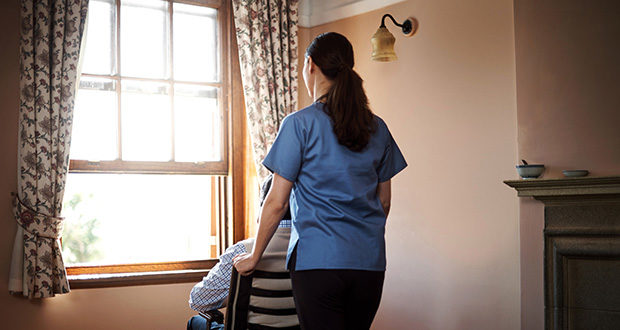Thank goodness the aged care peaks have finally merged. No-one’s been able to tell the difference for years. And it’s been way too easy for the government to play off the two competing “unions for aged care subcontractors”.
Who the peaks chose to merge with tells us lots about what they really wanted more of. The power to negotiate better deals with the government for their provider members.
So, now we have one mega-peak for not-for-profit and commercial providers of the government’s aged care program. But where’s the peak for what they don’t do?
And that’s a fair bit, because no-one really thinks anymore that aged care can deliver quality in the way older people think about it.
Unless you’re an aged care provider, success for them is meeting the government’s quality standards. The two, and now one, peak have responded, not by challenging this very odd view of quality, but by demanding more funding to do it. Because it’s the only lever subcontractors have, when the government purchaser alone decides what it wants to buy.
And worse, providing aged care the way the government wants is now the only skill and capacity providers have, because it’s the only one the government will pay for.
This is all pretty cosy. Disruption is on no-ones’ agenda.
With providers unwittingly becoming the meat in the sandwich between a grumpy community and a grumpy government.
Which risks the whole “societal institution for aged care” being denigrated before we consciously separate what it’s constituted to do and should focus on doing well, from what can never be the job of a paid professional service, that it will always do badly.
Aged care is a good way for frail people to maintain their independence. It’s a magnificent safety net for people who can’t get care from anywhere else, or whose care gets so complicated that no one else knows how to do it. And it’s a “partner-in-care” for carers to get on with their other responsibilities and opportunities, just like child-care is.
But, unlike child-care, no one thinks it’s a great place to be, where you find friends, something to do, good food, wellbeing, or even life-safety. This is the stuff of families, neighbours and freely-given community associations. Aged care will never be able to do this “properly”.
Which has never stopped paid professionals believing they can, and convincing the rest of us we can’t.
Which drives our communities to lose the skills to do this, and even the belief that it’s good to do.
There’s not much doubt that the new mega-peak will focus on a bigger and better “societal institution for aged care”. But will it remotely understand the limits of this and that there’s no richness in communities where there aren't also freely-given community associations? And that the two must work well together?
If aged care thinks it needs a mega-peak, then so too will freely-given community associations.
A peak that prises open the eyes of the aged care mega-peak, to see that brilliant care only comes from creating brilliant spaces in aged care that these freely-given associations can occupy.
That positions older people as valued and connected citizens. Pushing the market to shed its ageist mindset and start developing products and services that delight.
And that represents the need for us to understand what community associations are, the important role they play, and how communities can build them and look after them.
What we do know is that community associations can be organised groups, formal and informal networks, or neighbours and families just doing. John McKnight says (in The Careless Society) that we will need to step back; and listen to what local people can do and what they want to know; then convene local people around innovation; encourage networks to form; engage students and young people so they can see and be part of what communities can do; and always be welcoming.
There’s never been a better time to do this. Off the back of the rest of society similarly reorganising itself with very familiar, widely available and affordable technology.
Have a look at CareApp, for example, using technology to organise freely-given networks (and reorganise paid networks) around frail individuals in aged care spaces.
McKnight says we should move away from asking people what aged care they need and then pushing programs at them. The last vestiges of ACSA doing this were shed when it merged with LASA.
This could be a signal to end the tax concessions to not-for-profit aged care, that were intended for standing by vulnerable people and developing community capacity. And reassign the money into building community associations who will do this. And into subsidising individuals to be free to do this.
So, where to start?
• Change the narrative. Being frail is a life stage to be lived, not a trigger for care as if you are on your last legs.
• Build ways of making freely-given care capacities possible in communities, with their own powerful mega-peak.
• Have the aged care mega-peak recognise the limits of professional care, and the need for spaces that freely-given community associations can occupy.
And start loving this for its ability to drive aged care reform, where so much past and current effort has been making so little difference.
Do you have an idea for a story?Email [email protected]
 Aged Care Insite Australia's number one aged care news source
Aged Care Insite Australia's number one aged care news source

